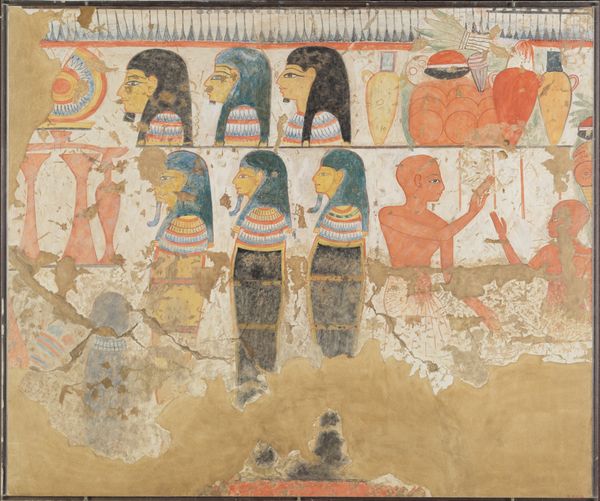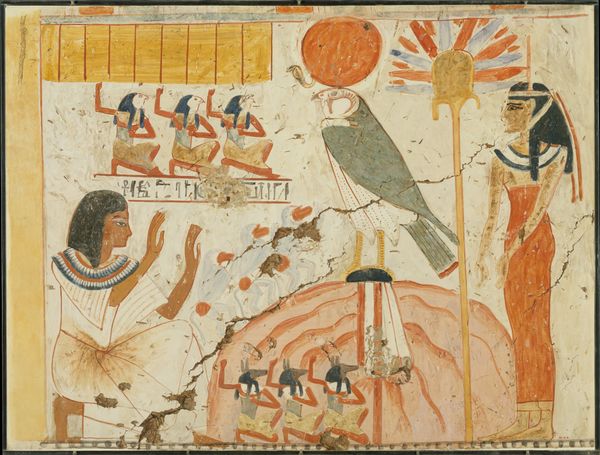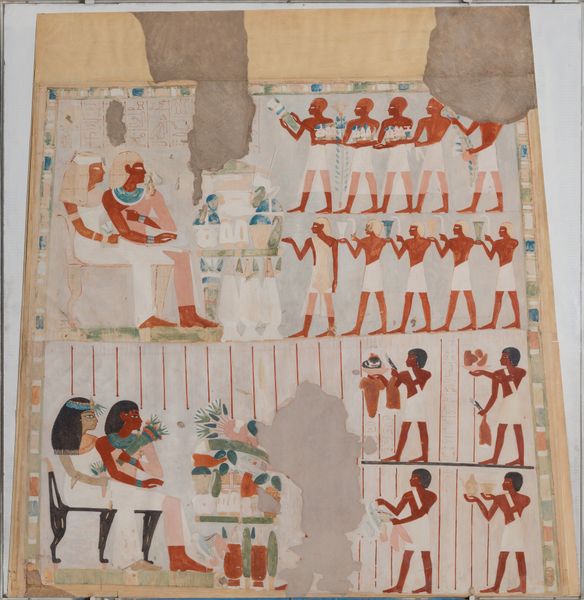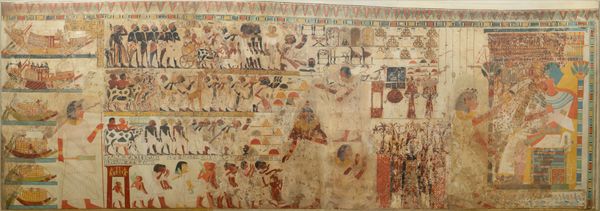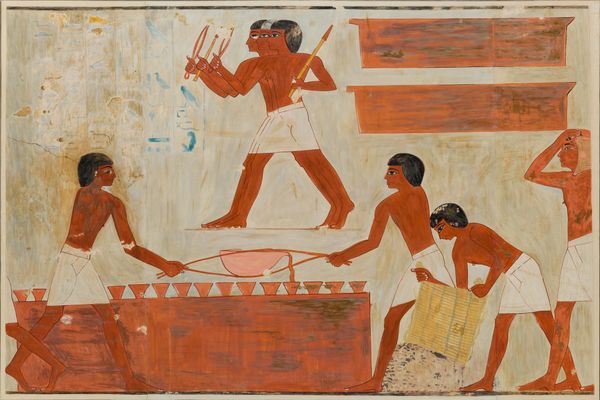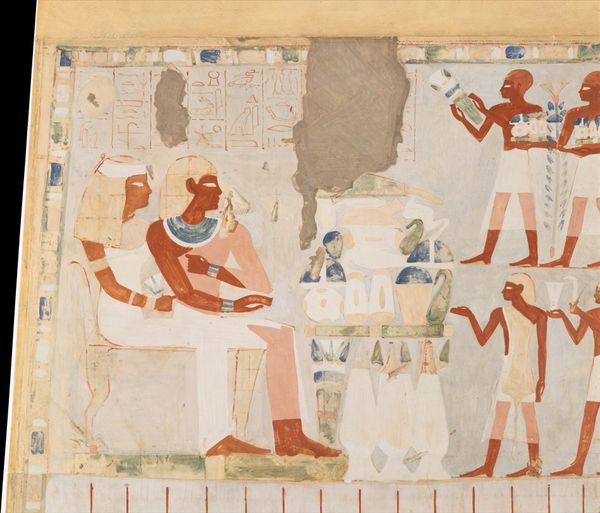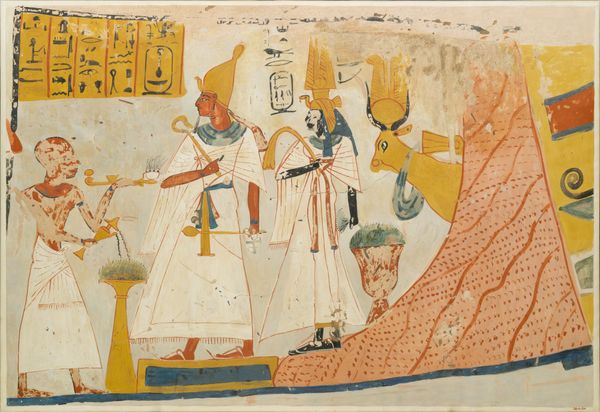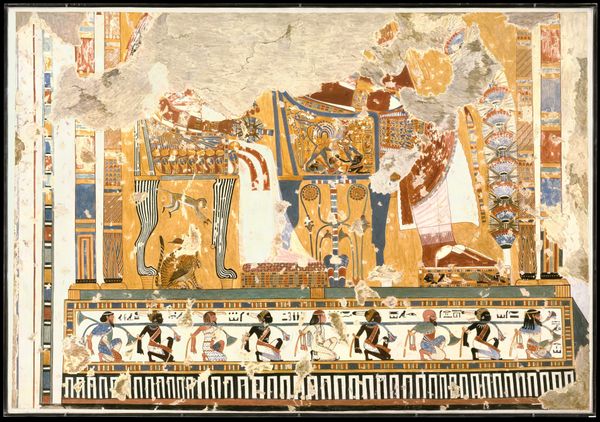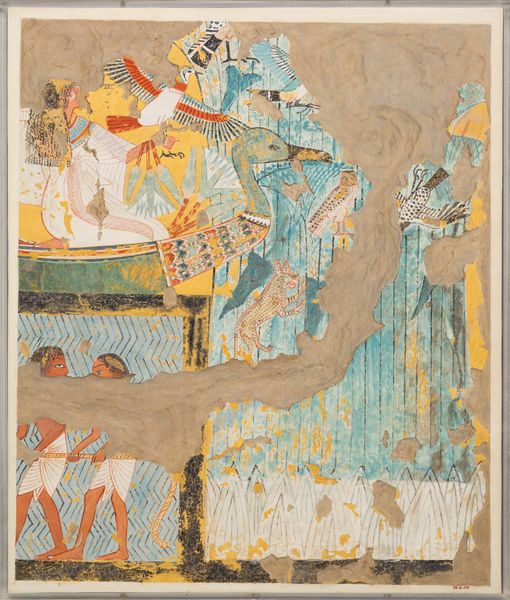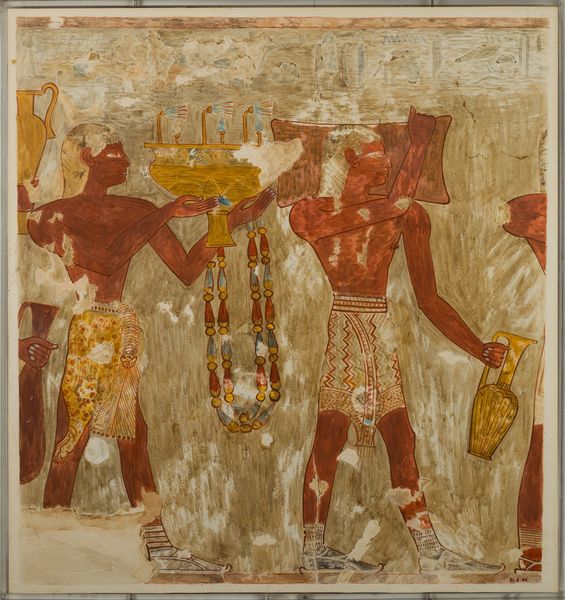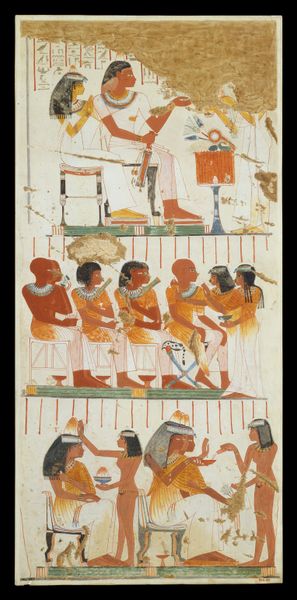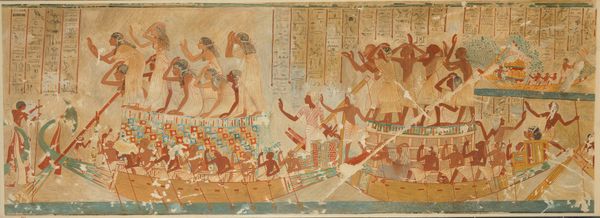
painting, watercolor
#
water colours
#
narrative-art
#
painting
#
ancient-egyptian-art
#
figuration
#
watercolor
#
egypt
#
ancient-mediterranean
#
history-painting
#
watercolor
Dimensions: Facsimile H. 64 x W. 75 cm (25 3/16 x 29 1/2 in.); Framed: H. 67.9 x W. 76.8 cm (26 3/4 x 30 1/4 in.); Scale. 1:1
Copyright: Public Domain
Curator: So, here we have "Dragging a Statue of Thutmose I," a watercolor painting by Norman de Garis Davies from 1294 BC. It's currently housed at the Metropolitan Museum of Art. The sheer scale of the statue implied by the figures is what strikes me. How do you see it? Editor: It's interesting how the painting depicts labor and the organization of a large workforce. What do you see as significant in terms of the materials used or the production of this work? Curator: Well, the use of watercolor is fascinating. It wasn't just about artistic expression, but the accessibility of the medium itself. Who had access to the pigments? How did the production and distribution of those materials impact artistic practice? Think about the labor involved in quarrying stone for the statue itself versus preparing and applying pigments for the image we are considering today. What statement is made? Editor: That's a really interesting point, I hadn't thought about the production in such a broad sense. Does the fact that the artist, Davies, is creating this image so much later alter how we should perceive this scene of labor? Curator: Precisely! Davies is essentially documenting and interpreting ancient labor practices through a distinctly modern lens and the conventions available to him. The choice of watercolor is deliberate. The art depicts the materiality of a statue and contrasts that with the materials involved in illustrating it. Can this medium really convey such a monument? Editor: I suppose that speaks to the differences in how societies value certain kinds of labor and the objects they produce. Curator: Exactly. The painting also reveals so much about ancient society’s dependence on both human and natural resources in creating and consuming symbolic works. Editor: It really reframes how I see this piece; thinking about the layers of production both then and now gives me a different appreciation. Curator: Agreed, seeing art through this lens helps us challenge these often unexamined hierarchies between making and meaning.
Comments
No comments
Be the first to comment and join the conversation on the ultimate creative platform.
